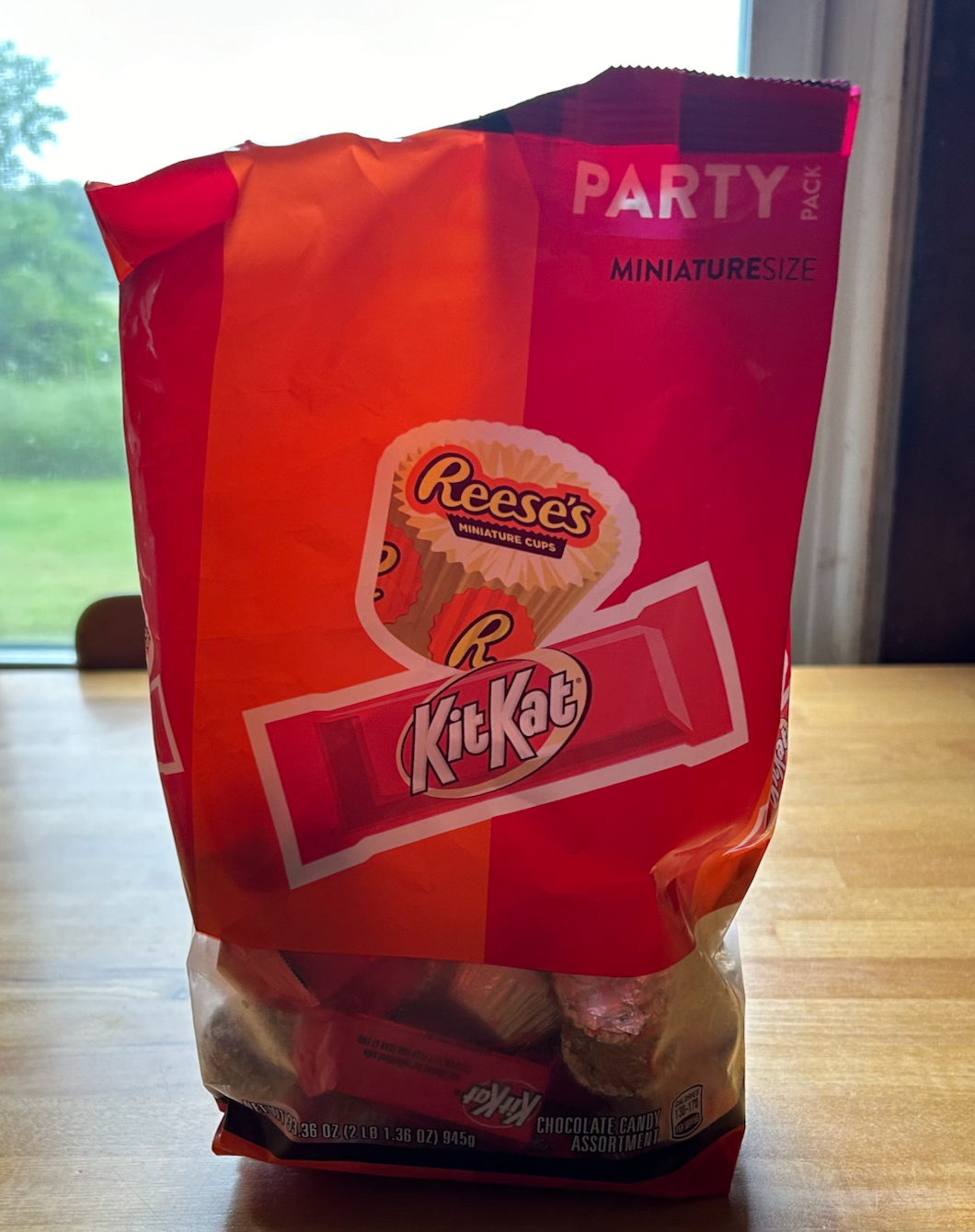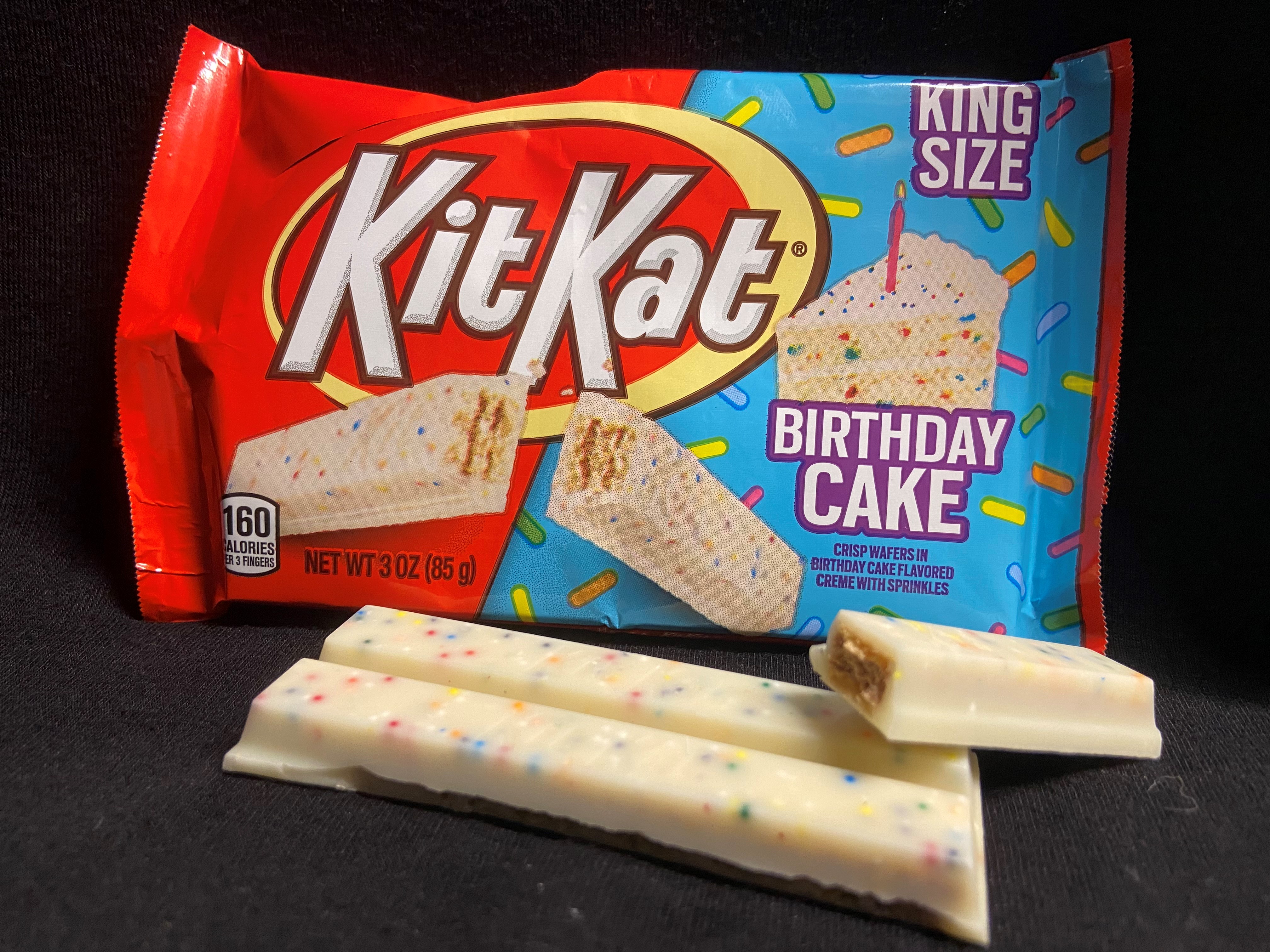What’s your favorite candy? M&M’s, Reese’s peanut butter cups, Hershey’s Kiss, Twix, Kit Kat? For me, it’s Kit Kats.
According to Hersheyland, Kit Kats landed in the US from the UK in 1935. Today, more than 15 million a DAY are made in the Hazelton, PA factory. That sounds a bit like heaven.

For 40 years of my life when I reached for a Kit Kat, I knew exactly what I was getting – layered crispy wafers wrapped in chocolate. Straight out of the freezer or fridge is best! Then something happened. All of a sudden, a Kit Kat wasn’t just a Kit Kat. In 1996, Kit Kat Orange was introduced in the UK, and it was a glimpse of things to come.
You can thank the low carb craze of the early 2000s for the mutation of Kit Kat into multiple variants as Hershey and other confectioners tried to stop the downward spiral of sales. Now when you grab a Kit Kat at check out, you better read the package. It could be mint or caramel or dark or churro or ghost toast or birthday cake or perhaps the worst mutation pink lemonade – Yuck!

Why mess with an original? Kit Kats were perfect just the way they were. At least, they were to me but these new twists on an original reversed the sales decline.
While far from a confectionary delight, chronic wasting disease (CWD) and Kit Kats do have some commonalties. CWD is a fatal brain disease that affects species like deer and elk. There is no cure or treatment. Deer get it from coming into contact with another infected deer or through contact with contaminated environments because infected deer shed prions which cause the disease.

When chronic wasting disease was the new prion disease on the block in the 1960s, no one was asking what “flavor” it was. The OG CWD if you will. There was only one transmissible fatal prion disease in deer.
Perhaps Mother Nature is a marketer. Expanding and diversifying to keep things fresh. Because right around the same time as the Kit Kat evolution, researchers began to uncover different strains of CWD. Who knew the low carb craze would have such an impact?
CWD is caused by a misfolded protein known as a prion. Like towels, they can be folded in many ways. Every misfold is a different strain of CWD. Right now, there are at least 10 strains of CWD. The end result of all deer infected with any strain of CWD is the same but what happens leading up to that isn’t. CWD strain alters the 18 to 24 month incubation period; the shedding of prions from an infected animal; the distribution of the prions in the body; and, most importantly, the species barrier. Currently, CWD is known to only affect deer species. If CWD were to infect a critter other than deer, it would be a game changer.
What’s driving the emergence of new strains isn’t lagging sales but genotypes. In order to be competitive in the CWD market, you need to diversify – try new folds. See which one is appealing to the target demographic – in this case different deer genotypes. You see there are some genotypes, often referred to as less susceptible or durable genotypes, in deer that aren’t that crazy about OG CWD. Deer with these durable genotypes still die if they are infected, but they live longer. This gives “marketers” the opportunity to try new folds. And they seem to have found a winner in a strain known as H95+. Those durable deer genotypes don’t hold up when exposed to this CWD strain and it could be the one to branch out to other species beyond deer. That would open a whole new market to CWD.
Yes, Mother Nature is definitely a marketer. No one should be surprised by this. Look at how successful she has been – Flu, Covid, the common cold. We might not like all her products, but you have to give it to her and the Kit Kat masterminds. They know how to increase sales and reach.
–Jeannine Fleegle
Wildlife Biologist
PA Game Commission
*If you are a first-time commenter on the blog, your post will not appear until it has been approved by the moderator. This is to prevent spam overwhelming us. If you do not see your post within 24 hours, please email us at deerforeststudy@gmail.com